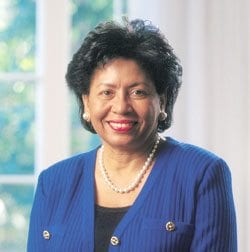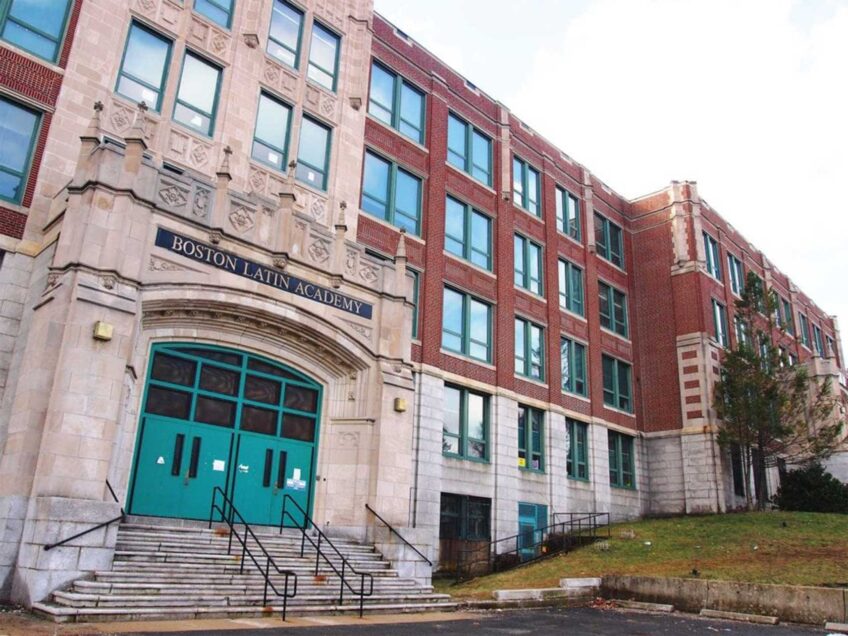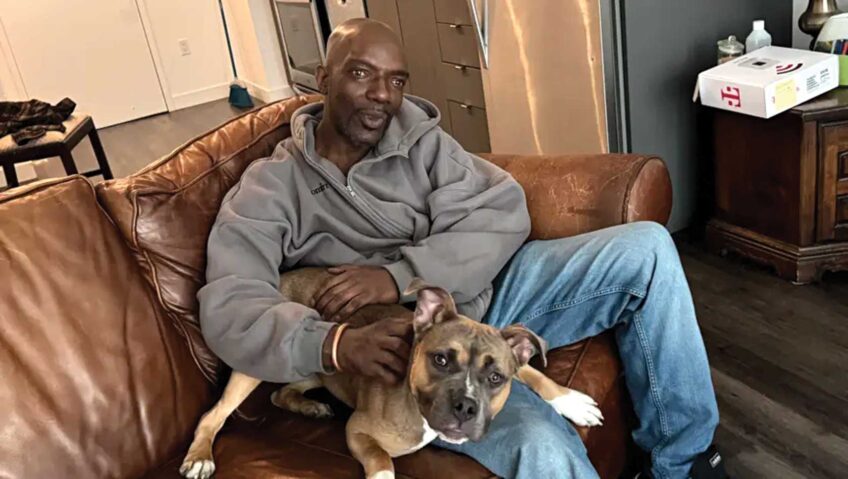
PROVIDENCE — Ruth Simmons made a big news splash a decade ago when she was named president of Brown University, making her the first black president of an Ivy League school. She made another three years later by naming a committee to investigate Brown’s past role in the slavery and make recommendations on possible reparations.
Reflecting on her tenure as she prepares to retire in June, Simmons, who is 66, does not mention her historic appointment in 2000 or the daring “Slavery and Justice” report among her most significant accomplishments as president of the prestigious university in Providence, R.I.
Instead, she lists the top three as Brown’s full adoption of need-blind admissions, 20 percent growth in the faculty and a new second campus, where expanded laboratory space has increased the flow of federal research dollars.
Brown adopted need-blind admissions for undergraduates in 2002 and then in 2008 stopped including student loans in the financial aid packages of those whose families earn less than $100,000. Slightly more than 40 percent of Brown undergraduates receive need-based grants, about a third are minorities and 16 percent are first-generation college students.
The number of faculty has increased to 687 this year, up 98 since 2001. Additions have been made across academic disciplines. At 19 percent minority, the faculty is more diverse, with Asians accounting for much of the growth.
“We had stagnated for a while with a faculty that really had been capped in size,” Simmons explains. “New fields develop, opportunities arise, and having a cap on the faculty is one of the worst things that you can actually do. So the cap was removed.”
As were limits to the college’s physical size. With no room to expand on the existing campus, Simmons oversaw the development of a second campus less than a mile away. Nine renovated buildings house molecular research laboratories, a public health program, a mathematics research institute and the Alpert Medical School, which relocated in August.
“I think, of all the things I have done at Brown, that will probably have the longest-term consequence for Brown because it will enable us to have more research space, enable us to expand the size of the faculty,” Simmons says. “It will enable us to do the things that a research university inevitably has to do to be competitive.”
The new campus has already produced financial dividends. Research funding from all sources has jumped by 83 percent since 2000. Medical research grants from the federal National Institutes of Health make up most of the increase.
“Our expectation when we started this process was by making these opportunities available for our faculty, freeing the space, building the infrastructure, that in time the faculty would have the opportunity to compete for these grants,” Simmons says. “That has turned out to be true.”
In the university’s announcement last month of her retirement plans, Chancellor Thomas J. Tisch, who presides over the Brown Corporation and Board of Trustees, said: “Ruth’s leadership at Brown has been monumental. From the moment of her arrival in Providence, Ruth has inspired our community to raise our sights, while providing the wisdom, direction and leadership to achieve our highest aspirations.”
Paget Henry, a sociology professor who is a senior black faculty member, also praises her overall leadership.
“You never felt there was drift at the university. There was leadership at the top,” says Henry, who has been on the faculty 24 years. “For Brown as a university, I have to say it has been 10 good years.”
Henry calls the faculty expansion “the big thing she has delivered on,” but criticizes its failure to restore the number of black professors to the peak reached before Simmons arrived. Six percent of the new hires have been black. “There’s nothing dynamic occurring in the area of black faculty hiring,” he says.
Off campus, the accomplishment at Brown that Simmons may be best known for is commissioning the Slavery and Justice report released five years ago.
The panel of faculty, administrators and students documented numerous connections between the university and slavery. Among the most prominent is that the four Brown brothers, who give the school its name and were major benefactors, owned and traded slaves. The oldest building on campus, where Simmons has her office, was built with some slave labor.
Reparations were not among a number of recommendations, which are intended to make amends in other ways by discussing and acknowledging the school’s slavery-tinged past.
Simmons says the goal along was to correct the “willful erasure of history, a history that is very important and very meaningful to a lot of people.”
Brown has implemented recommendations to discuss its slavery ties during freshman orientation and step up recruitment of minority students, particularly from Africa and the West Indies. A search is underway for a director of Institute on Slavery and Justice. A prominent black sculptor has been selected to create the slavery memorial on campus, but Simmons says the artist has balked at spending time on campus to deliver lectures.
Simmons acknowledges that mention of slavery still stops conversation on the campus — just as it does elsewhere. “I always say it doesn’t have to be easy,” she says. “We just need to do it.”
Claire Andrade-Watkins, a visiting scholar at Brown and associate professor of visual and media arts at Emerson College, says: “I think the reparations and slavery stuff was brilliant. She has really rewritten black history and the role of Rhode Island in the slave trade.”
Andrade-Watkins, who grew up in an established Cape Verdean community down the hill from Brown, has one criticism. That neighborhood, known as Fox Point, was “urban renewed” out of existence by the late 1970s — partly to protect Brown students from alleged dangers in the working-class community.
Compared to Brown’s confrontation of its role in slavery, Andrade-Watkins says, “There is no parallel responsibility for what happened to the Cape Verdean community. None.”
One part of her experience at Brown Simmons shies away from discussing: the significance of her being the first black president of an Ivy League school. “I leave it to others to speculate about that meaning,” she says.
Simmons remains the only the African American ever to have filled the top spot at one of the eight prestigious schools. She says “it’s impossible to predict” when another will be chosen, but says the pool of prospective candidates has unquestionably grown since she broke the barrier.
“There are so many highly visible and well-qualified women and minorities that there’s no reason that the pool of applicants and nominees for a presidential position shouldn’t be diverse,” she says. “It’s very much a changed world. Now, one might say that part of the reason that it’s a changed world is that people are prepared to present themselves perhaps in a way they wouldn’t have before because they think it is more open.”
Simmons will remain at Brown as a professor of comparative literature and Africana studies. She intends to complete a memoir she has started, and perhaps another book on education that is also a work-in-progress.
After what will be 12 years at Brown and five years before that as president of Smith College in Northampton, Mass., Simmons says she looks forward to expressing her opinions without having to consider how it might affect the institution she leads. She is particularly interested in commenting on politics and public policy.






